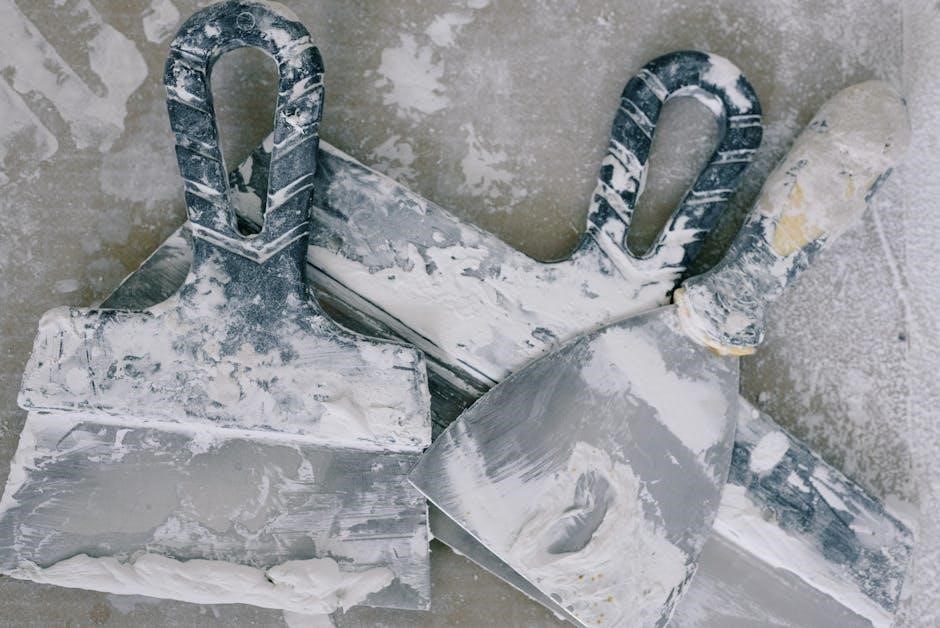
Knots are essential tools for securing, lifting, and connecting objects across various industries. Their versatility and reliability make them indispensable in sailing, climbing, camping, and everyday tasks.
1.1. Historical Use of Knots
Knots have been integral to human progress since ancient times, serving as fundamental tools for survival and advancement. Early civilizations, such as the Egyptians and Incas, relied on knots for constructing shelters, securing food, and creating clothing. Sailors and navigators used intricate knots to maneuver ships and sails, enabling exploration and trade across the globe. The development of specific knots, like the bowline and square knots, dates back centuries, with each design tailored for unique purposes. Over time, knots evolved to meet the demands of various industries, from climbing to medicine, showcasing their adaptability and enduring importance. Their historical significance underscores their role as a cornerstone of human ingenuity and problem-solving.
1.2. Basic Classification of Knots
Knots are primarily classified based on their function and design. The most common categories include stopper knots, which prevent ropes from unraveling or slipping; loops, which create fixed or adjustable rings; and bends, used to join two ropes together. Binding knots secure objects by wrapping around them, while decorative knots serve aesthetic purposes. These classifications help users choose the right knot for specific tasks, ensuring efficiency and safety. Understanding these categories is fundamental for mastering knot-tying skills, as each type offers unique advantages tailored to different applications, from sailing to camping. This classification system simplifies the vast array of knots, making them more accessible and practical for various needs;
1.3. Essential Knotting Techniques

Mastering essential knotting techniques is crucial for tying knots effectively. These techniques include wrapping, looping, and crossing ropes in specific patterns; Key methods involve creating foundational structures like bights, coils, and hitches. Proper tension and precise movements ensure knots hold securely. Techniques vary slightly depending on the knot’s purpose, but core principles remain consistent. Practice and patience are vital for developing muscle memory and improving speed. Understanding these fundamental techniques allows users to adapt knots to various situations, ensuring reliability and safety. Whether for camping, sailing, or everyday use, these skills form the backbone of knot-tying proficiency, enabling individuals to apply knots confidently in diverse scenarios and challenging conditions.

Types of Knots Based on Purpose
Knots are categorized by their function, including stopper knots, loops, bends, binding knots, and decorative knots, each serving specific tasks in various applications and industries.
2.1. Stopper Knots
Stopper knots are designed to prevent a rope from slipping through a pulley or block. They are typically tied at the end of a rope to create a fixed point, ensuring stability and control during operations. These knots are essential in sailing, rock climbing, and rescue missions where securing the rope is critical. Common examples include the Overhand Knot and the Figure Eight Knot, each offering unique advantages depending on the situation. Their simplicity and effectiveness make them a fundamental component in any knotting system. Properly tied stopper knots ensure safety and reliability, making them indispensable in various practical applications. They are easy to learn and quick to tie, providing a secure solution for many challenges.
2.2. Loops and Nooses
Loops and nooses are knots that create a closed or open circular shape, often used for securing objects or creating a temporary anchor point. Loops are particularly useful in climbing and sailing, allowing easy attachment and detachment. Nooses, on the other hand, are adjustable and often used in rescue operations or for trapping. The Bowline Knot is a prime example, forming a reliable loop at the end of a rope. These knots are versatile and essential for tasks requiring quick adjustments or secure holds. Their adaptability makes them valuable in various applications, ensuring efficiency and safety in both practical and emergency situations. Properly tied loops and nooses are crucial for maintaining control and preventing accidents in critical scenarios.
2.3. Bends for Joining Ropes
Bends are knots used to join two ropes together, ensuring a secure and reliable connection. The Sheet Bend is a popular choice for joining ropes of different sizes or materials, making it ideal for camping and sailing. Another common bend is the Square Knot, which is simple to tie and effective for joining two ends of the same rope. Bends are essential for extending rope length or combining shorter ropes into one. They are also used in rescue operations and for creating slings or pulleys. Properly tied bends ensure strength and durability, making them indispensable in outdoor activities and industrial applications. Mastering these knots is crucial for safety and efficiency in various scenarios. Their versatility and reliability make them a fundamental skill for anyone working with ropes.
2.4. Binding Knots
Binding knots are designed to hold objects together securely, often by wrapping around them or constricting the material. The Clove Hitch is a versatile example, commonly used for securing ropes to posts or rails. Another effective binding knot is the Miller’s Knot, ideal for bundling items like firewood or ropes. These knots are essential in camping, sailing, and even everyday tasks for keeping items tightly fastened. They provide a reliable way to manage and organize materials, ensuring they remain in place even under stress or movement. Properly tied binding knots prevent items from shifting, making them invaluable for transportation and storage. Their simplicity and effectiveness make them a crucial part of any knot-tying skill set, ensuring safety and efficiency in various applications.
2.5. Decorative Knots
Decorative knots add aesthetic value while maintaining functionality, often used in crafts, jewelry, and home decor. The Matthew Walker Knot is a popular choice, creating a symmetrical pattern. The Turks Head Knot is another favorite, known for its intricate design. These knots enhance the visual appeal of items like ropes, belts, and accessories. They are also used in ceremonies and traditional practices, symbolizing unity or craftsmanship. Decorative knots require precision and patience, making them a creative outlet for enthusiasts. Their beauty and historical significance make them a cherished part of knot-tying culture, blending artistry with practical skills. Whether for personal expression or cultural preservation, decorative knots continue to inspire and delight.

Common Working Knots
Essential knots like the Square Knot, Sheet Bend, and Bowline are reliable for securing loads, climbing, and sailing, offering versatility in various practical applications.
3.1. Square Knot (Reef Knot)
The Square Knot, also known as the Reef Knot, is a fundamental tying technique used to secure two ends of a rope together. It is simple to learn and widely used in various applications, such as sailing, camping, and first aid. The knot is formed by crossing two ropes over each other, creating a square-like shape; Its primary advantage is its ease of tying and reliability under tension. However, it can slip if not tightened properly, making it less suitable for critical loads. Properly tied, the Square Knot is an essential tool for everyday and emergency situations, ensuring secure connections when needed most.
3.2. Sheet Bend
The Sheet Bend is a versatile knot used to join two ropes of different thicknesses or materials. It is particularly useful when the ropes are too large or difficult to handle with other knots. The Sheet Bend works by creating a secure loop that holds fast under tension, making it ideal for temporary or emergency connections. One of its key advantages is that it can be easily tied even with wet or slippery ropes. While it is not the strongest knot for all situations, its simplicity and adaptability make it a valuable tool in both outdoor activities and everyday applications where quick, reliable connections are needed.
3.3. Bowline Knot
The Bowline Knot is renowned for its ability to create a secure, fixed loop at the end of a rope. It is widely used in sailing, climbing, and rescue operations due to its reliability and strength. The key feature of the Bowline Knot is that it does not slip or jam, even under heavy loads, making it ideal for lifting or securing heavy objects. It is also used to create a temporary harness for people, as the loop can be easily adjusted. Despite its complexity, the Bowline Knot is a fundamental skill for anyone working with ropes, offering both practicality and safety in critical situations.
3.4. Clove Hitch
The Clove Hitch is a versatile and widely used knot, particularly effective for securing ropes to posts, trees, or other structures. It is simple to tie and adjust, making it ideal for temporary fastening. The Clove Hitch is commonly used in camping, boating, and arboriculture for securing lines or creating a quick attachment point. Its key advantage is that it can be easily slid along the post to adjust the position without untying. However, it is not the most secure knot for heavy loads unless additional wraps or turns are added. Despite this, its ease of use and adaptability make it a favorite among outdoor enthusiasts and professionals alike for everyday applications.
3.5. Water Knot
The Water Knot is a reliable and essential knot used primarily in rock climbing and search and rescue operations. It is designed to join two ends of webbing or slings, creating a secure and compact connection. Unlike other knots, the Water Knot is highly resistant to slippage and maintains its integrity even when subjected to heavy loads or moisture. It is also known for its ease of tying, even with gloved hands, making it a preferred choice in emergency situations. The Water Knot is particularly favored for creating slings or extending anchor points, ensuring safety and durability in critical applications. Its simplicity and strength make it an indispensable tool for climbers and rescue teams.

Specialized Knots
Specialized knots are designed for unique tasks, offering tailored solutions for specific needs. They include the Man-Harness Knot, Cats Paw Knot, Thief Knot, and Granny Knot, each with distinct functionalities.
4.1. Man-Harness Knot
The Man-Harness Knot is a specialized knot used to create a secure loop in the middle of a rope, primarily for hauling or climbing purposes. It allows individuals to safely use the rope, making it an essential tool in rescue operations and industrial settings. Known for its reliability and strength, this knot ensures minimal slippage under tension. Its design distributes weight evenly, enhancing safety and control. The Man-Harness Knot is particularly valued in situations requiring quick, secure loops, proving indispensable in various practical applications.
4.2. Cats Paw Knot
The Cats Paw Knot, commonly used as a hook hitch, is ideal for securing ropes to hooks or spars. Its simplicity and speed of tying make it a favorite in various applications, including sailing and rigging. This knot creates a secure and stable attachment, ensuring the rope remains in place under tension. The Cats Paw Knot is particularly useful in situations where quick and reliable connections are needed, offering a practical solution for both professionals and enthusiasts. Its design allows for easy adjustment and release, making it a versatile tool in many industries.
4.3. Thief Knot
The Thief Knot, often compared to the Reef Knot, is a simple and quick way to join two ends of a rope. However, it is less secure and can slip under tension, making it unreliable for critical tasks. Unlike the Reef Knot, the Thief Knot is tied with both ends of the rope on the same side, creating a less stable connection. It is commonly used for temporary or non-essential applications, such as securing light loads or in situations where ease of tying is more important than security. Despite its simplicity, the Thief Knot is not recommended for situations requiring high reliability, as it can fail unexpectedly. Its primary advantage lies in its speed and ease of use, but this comes at the cost of reduced dependability.
4.4. Granny Knot
The Granny Knot is a simple, overhand knot often used to join two ends of a rope. It is quick to tie but lacks security, as it can easily slip under light tension. This knot is commonly used for temporary or non-critical tasks, such as securing small loads or bundling items. The Granny Knot is similar to the Thief Knot but is less reliable due to its tendency to come undone when not under constant tension. It is not recommended for situations requiring high reliability, as it can fail unexpectedly. Despite its simplicity, the Granny Knot is a useful option for everyday tasks where speed and ease of tying are prioritized over long-term stability and security.

Knots for Climbing and Sailing
Knots in climbing and sailing are crucial for safety and efficiency. They provide reliable connections, secure loads, and enable quick adjustments in dynamic environments, ensuring stability and control.
5.1. Bowline on the Bight
The Bowline on the Bight is a reliable knot used in climbing and sailing to create a secure, fixed loop in the middle of a rope. This knot is particularly useful for hoisting, lifting heavy objects, or creating a temporary pulley system. It is easy to tie and untie, even under tension, making it a favorite among climbers and sailors. The Bowline on the Bight is also used in rescue operations to lift individuals safely. Its versatility and strength make it an essential tool in various outdoor activities. Proper tying ensures a sturdy loop that can withstand significant weight, providing confidence in critical situations.
5.2. Figure Eight Knot
The Figure Eight Knot, also known as the Flemish Knot, is a reliable and widely used stopper knot in climbing and sailing. It is easy to tie and offers a secure way to prevent ropes from running out of pulleys or blocks. This knot is particularly popular in rock climbing as a safety measure to prevent falls. Its distinctive figure-eight shape makes it easy to identify and inspect. The Figure Eight Knot is also used at the end of a rope to prevent it from slipping through equipment. Its simplicity and effectiveness make it a favorite among climbers and sailors, ensuring safe and efficient operations in challenging environments.
5.3. Rolling Hitch
The Rolling Hitch is a versatile and secure knot commonly used for temporary fastening, especially on posts or rails. It is ideal for applications where the rope may be subjected to movement or shifting, such as securing loads on vehicles or boats. The Rolling Hitch is easy to tie and offers excellent grip, making it suitable for both smooth and rough surfaces. One of its key advantages is that it can be adjusted and tightened easily, even after being tied. This hitch is particularly useful in scenarios where the load may need to be moved slightly, as it allows for controlled sliding without coming undone. Its reliability and adaptability make it a popular choice in both marine and outdoor settings, ensuring secure fastening with minimal effort.

Decorative and Ornamental Knots
Decorative knots enhance visual appeal and add elegance to various items. They are used in crafting jewelry, home decor, and accessories, blending functionality with aesthetic beauty.
6.1. Reef Knot Variations
The Reef Knot, also known as the Square Knot, is a foundational knot with various decorative variations. One such variation involves wrapping the ends around the central loop to create intricate patterns. These variations are often used in crafting jewelry, where the knot’s simplicity is elevated to form visually appealing designs. Another variation includes interweaving colors to produce multi-tonal effects, making it popular in decorative items like keychains and wall hangings. Additionally, the Reef Knot can be modified by adding multiple turns, resulting in a bulkier, more textured appearance that enhances its ornamental value. These variations showcase the knot’s adaptability beyond its practical uses, making it a favorite in decorative applications.
6.2. Matthew Walker Knot
The Matthew Walker Knot is a decorative and functional knot with a rich history in sailing and camping. It creates a secure, adjustable loop at the end of a rope, making it ideal for applications where tension control is needed. Originally used in nautical settings, this knot is now widely used in camping for securing tent lines and creating adjustable loops. Its decorative appeal lies in its intricate, woven appearance, which makes it popular in macrame and jewelry-making. The Matthew Walker Knot is also used to add a stylish touch to bags and clothing. Its versatility and strength make it a favorite among outdoor enthusiasts and crafters alike, blending practicality with aesthetic charm.
6.3. Turks Head Knot
The Turks Head Knot is a highly decorative and intricate knot often used to add a touch of elegance to ropes or lines. Originating in nautical traditions, this knot is typically used to finish ropes or create ornamental flourishes. It is commonly found in sailing and yachting, where it serves both functional and aesthetic purposes. The Turks Head Knot is also popular in crafting and jewelry-making, where its symmetrical design adds visual appeal. Despite its complex appearance, it is relatively simple to tie once mastered. This knot is a favorite among those who appreciate both the artistry and utility of knot-tying, making it a timeless choice for various applications.

Knots for Camping and Outdoor Activities

Camping knots are vital for securing tents, creating shelters, and lifting gear. Popular knots include the Taut-Line Hitch, Trucker’s Hitch, and Prusik Knot, essential for outdoor safety.

7.1. Taut-Line Hitch
The Taut-Line Hitch is a versatile and essential knot for camping, used to secure tent lines, tarps, and other outdoor gear. It allows for easy adjustment of tension without loosening the entire knot. To tie it, create a loop and wrap the working end around the standing part, passing it through the loop twice before pulling tight. This knot is particularly useful for applications where adjustments are frequently needed, such as tightening tent ropes or securing loads. Its reliability and ease of use make it a favorite among outdoor enthusiasts. Additionally, it can be used to create a temporary clothesline or secure a bear bag in trees, making it indispensable for camping trips.
7.2. Truckers Hitch
The Trucker’s Hitch is a highly efficient knot used for securing large loads, such as tarps or ropes, to a post or truck bed. Its simplicity and speed make it ideal for securing cargo without slippage. To tie it, create a loop in the rope, pass it around the anchor point, and then bring the working end through the loop. Pull tight to secure. This knot is commonly used by truckers, campers, and outdoor enthusiasts due to its strength and ease of adjustment. It’s particularly useful for situations where a quick and reliable fastening is needed, making it a staple in both professional and recreational settings. The Trucker’s Hitch ensures a tight and secure hold, even with heavy or bulky items.
7.3. Prusik Knot
The Prusik Knot is a crucial climbing and rescue knot that creates a temporary, adjustable anchor point on a rope. It is designed to grip the rope tightly when weight is applied, allowing for secure ascending or descending. To tie it, wrap a loop around the main rope in a figure-eight pattern and pass the ends through the loop. The Prusik Knot is particularly useful in search and rescue operations, as it enables climbers to hoist or lower individuals safely. Its ability to lock under tension makes it ideal for creating makeshift pulleys or securing loads. This knot is a must-know for climbers, arborists, and rescue teams due to its reliability and versatility in critical situations.
Knots are timeless tools that have proven their value across countless applications, from sailing and climbing to camping and rescue operations. Their versatility ensures they remain indispensable in modern times. By understanding and mastering various knots, individuals can enhance efficiency, safety, and outcomes in both recreational and professional settings. Whether securing loads, creating anchors, or joining ropes, the right knot can make all the difference. This guide has explored the diverse types of knots, their unique purposes, and the techniques required to tie them effectively. With practice, these skills can empower anyone to tackle challenges with confidence and precision, making knot-tying an invaluable skill for generations to come.